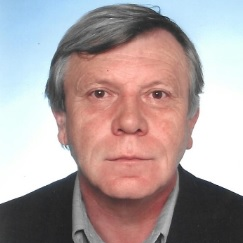Pollution and Remediation in Mining and Metallurgical Districts
A special issue of Minerals (ISSN 2075-163X). This special issue belongs to the section "Environmental Mineralogy and Biogeochemistry".
Deadline for manuscript submissions: closed (17 February 2023) | Viewed by 8629
Special Issue Editors
Interests: trace elements; environment; geochemistry; mineralogy
Interests: geochemistry of mine tailings; geochemical modelling; arsenic; modeling of reactive transport
Interests: hydrogeology; water protection; groundwater contamination; groundwater modelling; mine water modelling
Special Issues, Collections and Topics in MDPI journals
Special Issue Information
Dear Colleagues,
As the demand for mineral resources continues to grow worldwide, the impact of mining and ore processing will be an increasingly important concern in the field of environmental science. This Special Issue is expected to provide an international platform for geochemists, geologists, technologists and environmental scientists to present their studies which focus on the environmental problems related to mining and raw materials processing under different geological, hydrogeological, geomorphological and climatic conditions. Papers in this Special Issue are intended to summarize new data and new methods in the evaluation of soils, terrestrial ecosystems, streams and ground waters contamination, and to elucidate factors controlling the dispersion of pollutants. Special attention should be paid to the remediation measures to be implemented to reduce the negative impacts of mining and mineral processing on the environment and human health.
This Special Issue aims to contribute, using multi-disciplinary approach, to more sustainable development and use of natural resources, efficient environmental impact assessments and reclamation of districts affected by mining and smelting.
In general, this Special Issue is arranged (but not restricted) to include the following sections:
Section 1. Evaluation of the areal extent of soil and plant contamination in mining and mineral processing districts, identification of contaminants sources and use of a Geographic Information System (GIS)-aided technique for the assessment of environmental risks.
Section 2. The determination of the impacts of contaminated soils on the environment and human health and migration process of contaminants to reach human receptors.
Section 3. Rehabilitation techniques (including phytoremediation) and the risk assessment associated with shutdown of mines or mineral processing sites.
Section 4. The assessment of the sources, scope and intensity of leaching and attenuation of contaminants in the local drainage systems and ground water.
Dr. Bohdan Kříbek
Prof. Dr. Ondřej Šráček
Dr. Grzegorz Gzyl
Guest Editors
Manuscript Submission Information
Manuscripts should be submitted online at www.mdpi.com by registering and logging in to this website. Once you are registered, click here to go to the submission form. Manuscripts can be submitted until the deadline. All submissions that pass pre-check are peer-reviewed. Accepted papers will be published continuously in the journal (as soon as accepted) and will be listed together on the special issue website. Research articles, review articles as well as short communications are invited. For planned papers, a title and short abstract (about 100 words) can be sent to the Editorial Office for announcement on this website.
Submitted manuscripts should not have been published previously, nor be under consideration for publication elsewhere (except conference proceedings papers). All manuscripts are thoroughly refereed through a single-blind peer-review process. A guide for authors and other relevant information for submission of manuscripts is available on the Instructions for Authors page. Minerals is an international peer-reviewed open access monthly journal published by MDPI.
Please visit the Instructions for Authors page before submitting a manuscript. The Article Processing Charge (APC) for publication in this open access journal is 2400 CHF (Swiss Francs). Submitted papers should be well formatted and use good English. Authors may use MDPI's English editing service prior to publication or during author revisions.
Keywords
- soil contamination
- streams and ground water contamination
- mining
- smelters
- mineralogical and geochemical speciation of contaminants
- contaminants dispersion modelling
- crop contamination
- environmental risk assessment
- impact of contamination to human health
- remediation technics after mines and smelters shutdown






